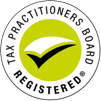In this issue:
- What does a higher FBT mean for your business
- Your holiday house and family arrangements
- What is negative gearing?
- Christmas year-end tax checklist for business
What does a higher FBT mean for your business?
Small business owners should write in their diaries that from April 1, 2015, the rate of fringe benefits tax (FBT) will increase from 47% to 49%. It is planned to return to its present rate two years later.
The rise is mostly due to the 2% Temporary Budget Repair Levy, and is designed to prevent individuals who earn more than $180,000 from salary sacrificing into fringe benefits in order to bring their income under the levy’s threshold, and so avoid the extra tax. The FBT rate will return to its current level on March 31, 2017 to align with the end of the levy and the end of that FBT year.
Fringe benefits can be a central option for employers seeking to make salary packages more attractive. There are many different possibilities and options to offer as salary sacrifices, including the use of a car, school fees, entertainment, healthcare and many other benefits. Competitive salary packages are often essential tools for securing the best staff for a business, as the right remuneration structures can let employers attract the right talent, minimise staff turnover and hopefully increases productivity.
When the FBT rate increases next April, many small businesses are likely to be affected. Employers may want to reconsider their current fringe benefit arrangements with affected employees in light of the increase.
For employers on packages of less than $180,000 a year, it may end up that it will be more beneficial to provide remuneration via salary and allowances rather than fringe benefits after next April 1. For example, where employers provide benefits such as paying for an employee’s private health insurance, it may be a better option to provide additional salary, which would be taxed at a substantially lower rate than 49%.
The increase in FBT means that employers should reconsider all current fringe benefits arrangements with their staff to limit the impact of possible additional costs and ensure that any arrangement is still as beneficial as possible, for both the employee and the employer.
For certain entities there is a cap imposed on the concessions available with regard to fringe benefits provided to employees. Therefore, after April 1, 2015, public benevolent institutions, public hospitals and certain other tax-exempt entities will have their fringe benefit caps increased to align with the new FBT rate. This is to ensure that employees are protected from having their incumbent packages eroded by reason of the increased FBT rate. For “rebatable employers” (certain non-profit bodies, registered charities, public educational institutions), the rebate available will also be re-aligned to match the new rate.
Your holiday house and family arrangements
The Tax Office has formed views about disclosing income and claiming deductions where non-economic rental arrangements – that is, “mates rates” – occur involving the use of holiday homes. A similar approach is adopted for arrangements you may make with family members involving residential property. The following is a summary of the Tax Office’s view for these types of arrangements.
Letting of property to relatives
Where the property is let to relatives on a commercial basis (that is, consistent with normal commercial practice) the owner of the property would return assessable income and be entitled to claim deductions no different to if it were an arm’s length situation.
If the property is let at less than commercial rent, the Tax Office’s general rule is that income tax deductions for losses and outgoings incurred in connection with the rented property may be allowed up to the rents received.
Claims beyond that limit would depend upon individual circumstances and would need to be assessed on an individual basis. In some instances, costs can be apportioned based on the amount of floor space used in deriving income.
Board and lodging
Adult children living at home and making token payments to their parents would typically constitute board and lodging.
Arrangements of this nature are considered by the Tax Office to be of a domestic nature and there should be no income tax consequences. The income received is not assessable and the owner is not entitled to claim any deductions.
Occupancy on basis of sharing household costs
As a general rule, such arrangements (where the owner is one of the “sharers”) are not considered to be a benefit to the owner and there should be no income tax consequences. The income received is not assessable and the owner is not entitled to claim any deductions.
Holiday home let for part year
The rent received from letting the property, at a commercial rental, is assessable income. Where friends or relatives of an owner occupy a property for holidays at zero or minimal cost, or the property is either occupied by the owner for short periods or remains unoccupied, then the token amounts received in these cases would not be considered assessable income.
Deductions in respect of the property are only available for those periods where the property is available for letting (that is, where active and bona fide efforts to let the property at a commercial rental have been made).
In one court case, the owners of a property for an income year had let the property for 16 days, occupied it for 107 days, and kept the property vacant for the balance of the year. The Taxation Board of Review apportioned the losses and outgoings attributable to the property on a time basis, and allowed a deduction for the proportion of the year that the property was let (in this case 4.4%).
Travelling expenses incurred by the owner of a property in inspecting and maintaining the property are typically allowable deductions. The cost of travel undertaken to prepare the property for incoming tenants, or to inspect the property at the conclusion of the tenancy, should also be deductible. Again, apportionment may be necessary to the extent that the property is not fully available for rent for the entire year.
Purchase of a residence by a family trust
Where a family’s residence is owned by their family trust, and rent is paid for the right to occupy the property, it often follows that the trust will incur a net loss from the arrangement.
Taxpayers should be careful when implementing such arrangements. The Tax Office may deny the losses incurred by the trust on the basis that the arrangement is a private or domestic arrangement.
Alternatively, the Tax Office may also deny any losses on the basis that the arrangement had been entered for the dominant purpose of obtaining a tax benefit (that is, to generate losses) unless there is a compelling alternative reason. The need to protect assets from creditors, amongst others, may be one such reason.
What is negative gearing?
How it works, the pros & cons
Taking out a loan to raise money for an investment is a well-used tactic for many Australians. In fact, borrowing to buy big ticket items is part of financial reality – for example, how many of us could afford to buy a house out of our own pocket?
Borrowing funds will increase the amount you can have invested, and naturally amplifies potential gains because there is a larger capital base on which to earn returns. The caveat in all this, of course, is that it can also magnify losses.
If you’re using borrowed funds, and the investment makes a loss, you are still responsible for the interest on the loan as well as the principal of the loan itself.
A “geared” investment is just another way of saying that the amount invested has been ratcheted up through getting a loan. The word gearing can be understood in a similar way to how gears work on a bicycle – a mechanism that turns a small effort on the pedal into a bigger physical force on the wheel.
One of the basic principles of tax in Australia is that costs necessarily incurred in earning income are generally tax deductible. Where a loan is needed to buy an income-producing asset, the interest on the loan is generally tax deductible. Being able to claim such costs is not peculiar to Australia, and operates in the tax regimes of many other countries.
The same principle operates in the finance and investments sphere – the tax law allows you to deduct certain costs from your income that are incurred when borrowing money for investment, provided the investment has been made to produce assessable income.
“Negative” gearing comes about when earnings from an investment do not cover the costs associated with that investment, such as interest on borrowed funds.
This is the concept of “negative gearing” in a nut shell – and is the reason why it can be so appealing for many investors, given that there are tax benefits for using someone else’s money.
Investment property
Property is one investment area where negative gearing has been used to great effect.
For investment property, the ideal situation would be to make enough returns to cover loan repayments, plus interest, over the life of the loan. But what are some of the risks of having a negatively geared property? Examples include interest rate increases, or tenants moving out and leaving you with no rent coming in. A longer-term concern would be the property losing value over the time you own it.
Should the costs in relation to a rental property – such as rates, repairs, depreciation – exceed its income, the net loss in most circumstances can be offset against a taxpayer’s other income. In other words, you can apply the loss against your assessable income to end up with a reduced taxable income. Ask this office for further costs that can be claimed for rental properties.
Basic example
An investor has a net salary, after tax deductions, of $50,000 and borrowed $102, 000 at 10% interest a year to but a property. Net income from this investment property for the year comes in at $6,240 (which is after deductible expenses other than interest).
| Taxable salary | $50,000 |
| Plus net rental receipts | $6,240 |
| Total assessable income | $56,240 |
| Less interest deduction | -$10,200 |
| Taxable income | $46,040 |
| Tax payable (excluding Medicare) | $7,362 |
Christmas year-end tax checklist for business
Please click on link below:
Disclaimer: All information provided in this publication is of a general nature only and is not personal financial or investment advice. It does not take into account your particular objectives and circumstances. No person should act on the basis of this information without first obtaining and following the advice of a suitably qualified professional advisor. To the fullest extent permitted by law, no person involved in producing, distributing or providing the information in this publication will be liable in any way for any loss or damage suffered by any person through the use of or access to this information.




